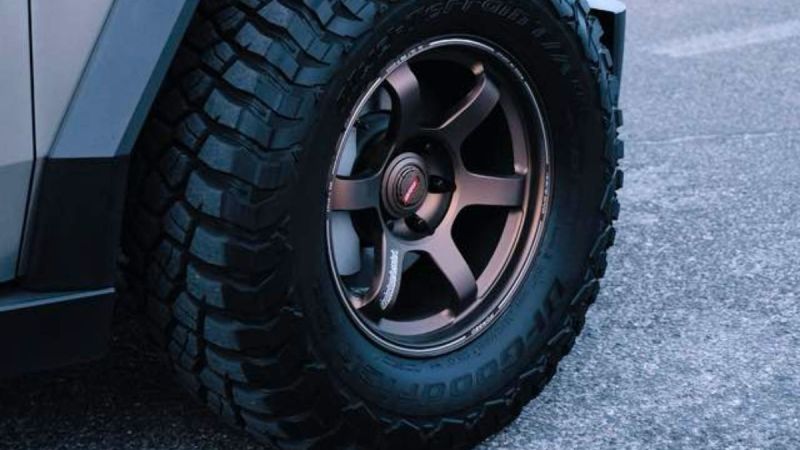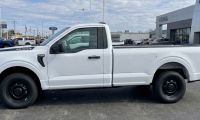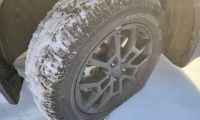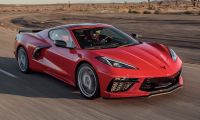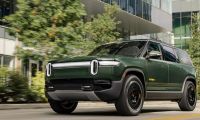It started out like many Cybertruck upgrade posts do, with someone excited about a fresh mod. New wheels, fresh tires, a change that makes the truck feel a little more your own. But this one caught my eye because it had a twist. The kind of twist that leaves you second-guessing whether the upgrade was worth it at all. It came from a Facebook post in the Tesla Cybertruck Enthusiasts public group, and the experience shared by David Moss was one of those unexpectedly useful reminders that even the best upgrades come with trade-offs.
Here’s what David posted:
"Got some new shoes today. BFGoodrich KO3's tires."
But let me paraphrase David based on the discussion that other group members also helped to build. He could have said (he didn't say):
“Got some new shoes today on my Cybertruck: BFGoodrich KO3’s! They ride great. Surprisingly pleasant. They’re super quiet. I expected more noise. Just driving around town and freeway. A little heavier, and yes, there’s a noticeable hit on range. But for now, I’m really liking the look and feel. Not sure it’s the best decision long-term though.”
The line that really stayed with me was “not sure it’s the best decision long-term.” That hesitation is something a lot of EV owners can relate to, especially when it comes to tires. If you’ve ever swapped tires on an electric vehicle, particularly one as heavy and tech-laden as the Cybertruck, you already know that range can be affected by things most folks don’t even think about. Tread pattern, rubber compound, sidewall stiffness, weight, and rolling resistance all play into it. And when you go from something like the factory Goodyear Wranglers or Pirelli Scorpions to KO3s, those numbers start to change. Fast.
In the comment section, fellow group member Brent DeWolf asked the question most people were probably thinking:
“How did they affect range?”
David didn’t hold back:
“It’s bad.”

He didn’t give an exact number, but from what we know from other Cybertruck owners who’ve switched to similar tires, the range loss can hover anywhere from 5 percent to even 15 percent depending on driving habits, terrain, and load. That means if you were expecting 300 miles, you might now get closer to 255. That kind of drop can be frustrating, especially if you were counting on those miles during road trips or towing runs. In fact, another Cybertruck owner recently shared that his range dropped by 30 percent after switching to Goodyear Duratracs, and he wondered out loud whether he made the wrong move. You can read his full account in this related article: My Cybertruck’s Range Dropped 30 Percent After Switching to Goodyear Duratracs – I Think I Made a Mistake.
A key contributor to this reduced range is the increased weight of the BFGoodrich KO3s. The stock Goodyear Wrangler Territory RT tires weigh approximately 57.4 pounds each, while the Pirelli Scorpion ATR tires are even lighter at around 46.3 pounds. In comparison, the BFGoodrich KO3 in the Cybertruck's 285/65R20 size weighs in at about 62 pounds per tire. This added rotational mass requires more energy to start and maintain motion, directly impacting the vehicle's efficiency, particularly in stop-and-go city driving.
Furthermore, the KO3's aggressive tread design, engineered for superior traction in off-road conditions, creates more friction with the road surface. This increased rolling resistance means the motors must work harder to propel the vehicle forward, consuming more energy, especially at highway speeds. While one comparison suggested the KO3 might have slightly better rolling resistance than a similar Goodyear all-terrain tire, the overall design characteristics still point towards a less efficient on-road experience compared to the more street-focused stock options.
But what makes David’s experience even more intriguing is that despite the hit on range, noise wasn’t one of the drawbacks. Another user, Ed Moss, chimed in to ask:
“How noisy are these tires?”
Kevin Roll jumped in with the response many of us weren’t expecting.
“I've had these, not noisy at all and pretty much the best all around tire you can buy. Very expensive but good stuff always is. A few good close to these options out there so do your shopping. Falken makes a decent one I've had.”
So here we are, stuck in a strange space where something that looks and feels right, doesn’t necessarily drive right. And that gets us to the heart of the issue. The BFGoodrich KO3s are fantastic tires in many ways. They grip, they last, they don’t growl on pavement like you might expect, and they look incredible on the Cybertruck’s chunky profile. But they pull energy out of your battery in a way that’s hard to ignore. For some, it’s a fair trade. For others, it starts to feel like an unchecked penalty you didn’t sign up for.
The core issue here is really about expectations versus reality, something that keeps popping up in Cybertruck discussions. Just recently, one owner shattered expectations by actually gaining 30 extra miles of range with a tire change. That rare case shows the potential when you choose efficiency-focused tires. His full experience is worth reading here: Cybertruck Owner Shatters Range Expectations by Getting 30 Extra Miles with New Tires.
But David’s story is the more common one. Most aggressive all-terrain upgrades chip away at range, even if they ride better than expected. The lesson is this: every tire choice is a trade, and not all gains are measured in noise reduction or curb appeal.
Now here’s where things get deeper. A lot of us are drawn to KO3s or similar tires because of their off-road cred. They symbolize independence, adventure, readiness. But ask yourself, how often are you actually going off-road in your Cybertruck? And if you are, is that extra 50 pounds of sidewall and knobby tread really worth losing 30 or 40 miles of usable range?
Sometimes, we choose things that look rugged because we want to feel rugged, even if the closest we get to a trail is a gravel parking lot. The better decision might be to choose tires that serve your real needs, not just your imagined ones. There's a quiet lesson here in prioritizing function over image. Not every decision needs to be about us. Sometimes, the better choice is the one that leaves you more range to get your kid to school or your spouse to their night shift without a second stop at a charger.
On that note, it's worth remembering that Tesla is now offering a Winter Tire Package for the Cybertruck in North America, tailored for cold weather without trashing your range numbers. That package is expensive, yes, but it reflects Tesla’s recognition that tire choice is mission critical for Cybertruck owners. You can learn more about that option in this related story: Tesla Unveils Cybertruck Winter Tire Package in North America for $3,000.
There’s also a growing number of cases where tire centers won’t even touch Cybertruck tires yet. One owner shared that a tire service center refused to rotate his tires because of uncertainty about specs and safety protocols. That’s another angle you may want to think about before switching to something non-OEM. That full story is here: Cybertruck Owner Reports Tire Service Center Refused to Rotate His CT’s Tires.
Finally, you may remember the story about the owner who changed from the futuristic OEM Cyber wheels to unsightly aftermarket core wheels with Pirelli Scorpion tires. He sacrificed looks for improved ride quality and range. That tradeoff might not win any beauty contests, but it tells you where his priorities were. If you missed that account, it’s here: I Changed My Futuristic Tesla Cybertruck Cyber Wheels to Unsightly Core Wheels with Pirelli Scorpion.
Moral of the story? Just because something looks aggressive doesn’t mean it’s the right kind of aggressive for your lifestyle. The better decision sometimes isn’t the more exciting one, but it can be the smarter one in the long run. If you’re switching tires just to keep up with a trend or for a style flex, consider that the energy you burn might be better spent getting somewhere further, safer, or with more purpose. And for EV owners, energy isn’t just a resource, it’s a reflection of how you think ahead.
So now I’m curious. Have you ever changed tires on your EV or truck and regretted it later? Or maybe you found the perfect balance of looks, noise, and efficiency. Tell us about your experience in the comments below. Did your tire upgrade surprise you in a good way, or did it come with unexpected downsides you didn’t see coming?
Images by TC Chand and David Moss from the Tesla Cybertruck Enthusiasts public group on Facebook, used for news-reporting purpose.


